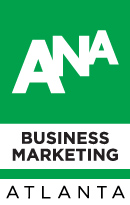Your Ad Spend is Much More Effective with a Solid, Creative “Hook”
Just a silly little kids’ game of one-upmanship, but I bet we all played it, right? Now that we’re fully grown and mature adults, you’ll probably say you haven’t played it in years.
Not so fast, bucko!
If you’re reading this, the odds are pretty tall that you’re a professional marketer or communicator. Your job is to be a brand storyteller, using words and images to attract potential customers to learn more about your product or service. In essence, you want to make them “look.” In the race to the sale, the one who gets a customer to look longer or more often probably wins. And how do you get that result?
You create a message that connects to a buyer on a personal level. One that resonates with them as meaningful on an emotional level. One that makes them look longer and remember more. That’s where the creative elements of your messaging do the heavy lifting.
Developing Creative Advertising is a Rough Road…
I started out in ad agencies in the mid-1970s as a copywriter, working for the men and women who, a decade earlier, populated the agencies seen in Mad Men. From the President right on down to the senior account guys, they were all capable of thinking expansively and creatively, believing creative was their product. Believing the creative product was what clients bought, because, in turn, it sold their products. That thinking rubbed off on me in a big way.
They also taught me that there were many ways to craft a message, most of which would be no more meaningful than pocket lint. Creativity was hard work. The VP I reported to likened the process to gold prospecting. You pan and sift and pan and sift until you find the nugget. Even at that, the value of that nugget was like the price of gold. Value lies in the customer thinking it’s valuable to them.
There aren’t any shortcuts, but there are some signposts
The biggest lesson I learned was that people have a lot in common. Especially true when you talk about a single nation, but, in some ways, also true on a global scale. While there are differing schools of thought about the fundamentals of creative advertising, I think that commonality is the biggest key to successful creative. Find a way, in a combination of words and imagery, to tap in to that collective consciousness and you’re half way home. The other half of the job is successfully connecting that “spinal tap” to your product or service and how it meets customer needs.
I’m sure you readers are a pretty diverse group in terms of age. So, I want you all to think about the first ad … TV, print, whatever … that pops into your mind. Then, examine what makes it meaningful to you. If it doesn’t, basically, boil down to words or images that are drawn from a shared human “lexicon” and experience, I’ll be surprised.
My own personal favorite comes from the mid-70s, when gas lines were long, gas purchases limited and tempers were short. Helmut Krone, an art/creative director at Doyle Dane Bernbach until the late 1980s, had rocked the ad world with his 1960s Volkswagen Beetle ad series. In this particular ad, the visual was a simple, almost abstract pen-and-ink drawing of a man pointing a gas nozzle, pistol-like, at his head. The headline: “… or buy a Volkswagen.” That communicated product benefit, in that prevailing economic environment, right to the gut!
State the Common, Uncommonly…
Every buyer has needs they wish to fill. They’re looking for a way to fill them. Your job? Make them look to you as the one who fills the need the best. That’s how you build a brand. Find the soft spot in their psyche and sink in. Long ago, in a galaxy far away (okay … a few years ago), cell phone calls often got dropped. It drove people nuts. Verizon to the rescue. “Can you hear me now?” Translation: We feel your pain and are working to fix it.
That campaign went right to the heart of user need and frustration. No real need for features/benefits conversation. Just acknowledge the customer problem and show your solution. Verizon took the obvious and made it their own.
I mentioned Doyle Dane Bernbach (DDB) earlier. I once heard or read that Bill Bernbach, the driving creative force at the agency, had an interesting conversation with the ad manager of Black and Decker. In the early 60s, B&D decided to enter the consumer market, after being strictly a B2B seller. As the story goes, their ad manager waxed poetic about the quality and durability of their drills and drill bits. “I get it,” said Bernbach, “you guys make great drills and bits. But your customer could care less about your 1/4” drill bit. They just want 1/4” holes.”
In a nutshell, that’s it. Solid creative messaging is about how you’d fill the customers’ need in a memorable fashion. Notice that I used “customers’” plural. Few of us, as marketers, make the mortgage selling one, customized product at a time. We rely on appealing to a wider audience of users/choosers. So, we need to define the broader, more universal needs of our customer base and craft a message that, simply, says “we understand what you need and have you covered.”
Start by Asking the Three Key Questions
Those questions?
What need does my potential customer have?
How does my product or service meet that need?
How can I communicate to them that I meet it best?
This is where creativity, market research and product meet. To get to the right message, you need the right product, designed to meet a well-defined customer need. There’s a gestalt here. Nothing will kill a stunning ad campaign faster than a bad product. Similarly, nothing stalls a great product introduction faster than a bad campaign.
Marketing communications is not a stand-alone discipline; it needs to be an integral part of how a company does business. The more integrated the marketing, communications, sales and product management/development teams are, the greater the chance for success.
As Stephan Vogel, Ogilvy & Mather Germany’s chief creative officer wrote: “Nothing is more efficient than creative advertising. Creative advertising is more memorable, longer lasting, works with less media spending, and builds a fan community … faster.”
Need more information?
Chief Idea Officer, Pen & Inc. Marketing Communications
Marietta, GA
770-354-4737
www.linkedin.com/in/marksemmelmayer/
About the Author
MARK SEMMELMAYER is a former Chairman of the Business Marketing Association (BMA) and Past President of the BMA’s Atlanta Chapter, Recipient of the 2015 G. D. Crain Award from BMA and an Inductee in the Business Marketing Hall of Fame, Mark is a 40-year B2B marketing veteran, including 32-years with Kimberly-Clark.. He is the founder and Chief Idea Officer of Pen & Inc. Marketing Communications, a consultancy in Atlanta, GA.
*This article was originally posted on LinkedIn Pulse.




